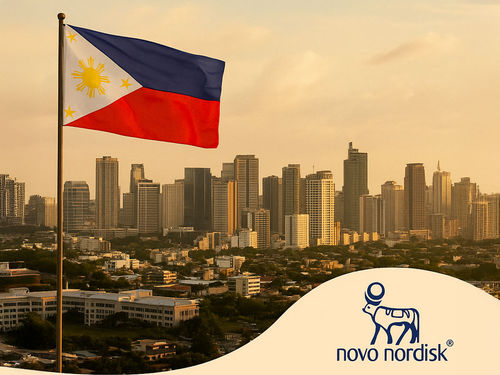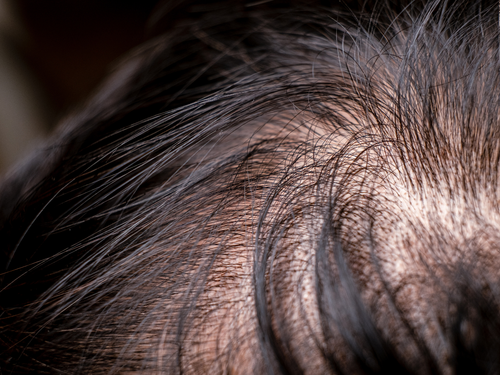

Heart attacks aren’t just something that happens to people overseas or to the elderly. In the Philippines, heart disease remains the leading cause of death, and heart attacks are a major part of that statistic.
Heart attacks aren’t just something that happens to people overseas or to the elderly. In the Philippines, heart disease remains the leading cause of death, and heart attacks are a major part of that statistic. Whether you’re in your 30s working long hours at a corporate job or in your 60s enjoying retirement, a heart attack can strike without warning. But with the right information, you can lower your risk and know what to do if it happens.
In this guide, we break down what causes heart attacks, how they affect Filipinos, and what steps you can take to protect your heart.
What Is a Heart Attack, Exactly?
A heart attack—also called myocardial infarction—happens when blood flow to part of your heart is blocked. Without enough oxygen, the heart muscle starts to die. The longer you wait to get treatment, the more damage it does. This blockage usually happens because of a buildup of plaque (cholesterol and fat) in your arteries. When that plaque ruptures, it can cause a clot that stops blood flow.
It’s a medical emergency. The faster you get help, the better your chances of recovery.
Common Signs of a Heart Attack
The classic heart attack symptoms are:
-
Chest pain or discomfort that feels like pressure, squeezing, or fullness
-
Pain that spreads to your arm, neck, jaw, or back
-
Shortness of breath, even without chest pain
-
Cold sweats, nausea, or lightheadedness
But here’s the tricky part—symptoms aren’t always obvious. Some people, especially women, diabetics, and older adults, may feel tired, dizzy, or just “off.”
In the Philippines, it’s not unusual for people to shrug off signs as “pagod lang” or “kabag.” That delay can be deadly. There are also other lesser-known symptoms that people often overlook.
Why Heart Attacks Are So Common in the Philippines
Several local factors put Filipinos at higher risk for heart disease and heart attacks. Filipino diets, while delicious, often include processed meats, fried dishes, and high-sodium condiments. Lechon, chicharon, and instant noodles are favorites—but they can be harmful if eaten often. Sedentary lifestyles are also a concern. Long commutes, desk jobs, and heavy gadget use mean many people are not getting enough movement each day. Add to that high rates of smoking and alcohol use, plus underdiagnosed conditions like hypertension and diabetes, and it’s easy to see why heart issues are rising.
Financial barriers and healthcare access also play a role. Many people skip annual checkups or ignore early warning signs due to cost or distance from clinics. A study by the Philippine Statistics Authority found that cardiovascular disease is responsible for roughly 19% of deaths in the country—more than any other cause.
Risk Factors You Should Know
Some risk factors are genetic. If heart disease runs in your family, you may be more prone. But many risks are lifestyle-based and can be controlled. Smoking increases your chances significantly. So does high blood pressure, obesity, diabetes, high cholesterol, and chronic stress. Not getting enough sleep or eating too much processed food increases your risk as well. Men are more likely to have heart attacks earlier in life, but women catch up after menopause.
What to Do If You Think You’re Having a Heart Attack
Don’t wait it out. Every second counts. If you or someone near you has symptoms, call for emergency help immediately. In the Philippines, dial 911 for government emergency response or use a private ambulance service if available.
While waiting for help:
-
Stay calm and rest. Avoid moving around.
-
Loosen tight clothing.
-
If the person is conscious and not allergic, give them aspirin to chew—this helps slow clot formation.
Do not drive yourself to the hospital unless there’s absolutely no other option. It’s safer to wait for trained responders.
Diagnosis and Treatment in the Philippines
At the hospital, doctors will likely run an ECG (electrocardiogram) and blood tests to confirm a heart attack. Treatment depends on the type of heart attack. You may need clot-busting medications, a procedure to unblock arteries (angioplasty), or even surgery like a bypass.
Private hospitals in Metro Manila like St. Luke’s, Makati Medical Center, or The Medical City have 24/7 cardiac care units. In provinces, government facilities such as the Philippine Heart Center also provide specialized treatment. Health cards and PhilHealth can help cover some costs. But check with your provider to know what’s included.
How to Lower Your Risk Starting Today
Small, consistent changes can protect your heart for the long run.
-
Eat more fiber-rich food like vegetables, beans, and whole grains. Cut down on processed meats and fried dishes. Try steaming, grilling, or baking instead of frying.
-
Move more each day. A brisk 30-minute walk or following a home workout on YouTube counts. Add small bursts of activity throughout the day like taking the stairs, stretching during breaks, or walking while on the phone.
-
Stop smoking and limit alcohol.
-
Manage stress with breathing exercises, journaling, or quiet hobbies. Apps like Calm or Insight Timer have free tools in Filipino and English. Talking to a therapist—even online—can make a big difference.
-
Check your blood pressure and sugar regularly. Many barangay health centers offer free or low-cost screenings. Some community pharmacies also offer testing services or affordable health packages.
-
If you're prescribed medication for cholesterol or hypertension, take them as directed. Don’t skip doses just because you “feel fine.” Always consult your doctor before making any changes.
When to See a Doctor
Even if you haven’t had a heart attack, it’s smart to get checked if you:
-
Have a family history of heart disease
-
Experience chest discomfort during activity
-
Notice swelling in your legs or sudden fatigue
A simple check-up can include blood pressure readings, cholesterol tests, and ECGs. These are often covered by PhilHealth or HMO plans.
Don’t Wait for a Wake-Up Call
Heart attacks can be silent—but their effects are loud and lasting. In the Philippines, where heart disease is widespread, prevention is your best defense.
Listen to your body. Know your risk. Make small but meaningful changes. And if something feels wrong, don’t wait—get help. For more health tips and expert-backed advice, visit the Andyou Health Club. Your heart deserves the best care.

Explore More Guides and Articles You'll Love
Explore our latest guides and articles to help you learn more about the latest trends in the industry.

Androgenic Alopecia
The term Androgenic Alopecia might sound technical and intimidating, but it is simply the medical name for the most common type of hair loss in the world. For Filipino men, it is more commonly known as male pattern baldness. If you are noticing a receding hairline, a thinning "bumbunan" (crown), or that your hair just does not feel as thick as it used to, it is overwhelmingly likely that Androgenic Alopecia is the cause.

Tinea Capitis
If you have ever noticed an itchy, scaly, and circular rash on your scalp, you might be dealing with Tinea Capitis. More commonly known as scalp ringworm or "buni sa anit" in the Philippines, this condition is not caused by a worm at all, despite its name. It is a highly contagious fungal infection that affects the scalp and hair shafts, leading to significant irritation, itching, and sometimes patchy hair loss.

Club Hair
In this post, we’ll explain what club hair really is, how to distinguish it from unhealthy shedding, and what it can tell you about your scalp health. We’ll also dive into what’s normal, what’s not, and what you can do if you notice excessive hair loss.












